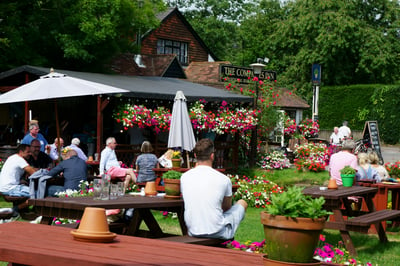King Alfred's Way
Discover a Literary and Historical Cycling Trail in the Heart of the English Countryside.
King Alfred's Way is a celebration of British heritage, blending outdoor adventure with the timeless influence of history and literature.
How Long is King Alfred’s Way?
King Alfred's Way is a 350 km (220 miles) circular off-road cycling trail in southern England.
Originally created by CyclingUK this adventurous route takes riders through the historic landscapes of Wessex, the Anglo-Saxon kingdom of Alfred the Great. Starting and ending in Winchester, it weaves through a tapestry of British history, including iconic landmarks like Stonehenge, Avebury stone circle, Iron Age hill forts, and Winchester and Salisbury Cathedrals.
Where do I start King Alfred's Way?
The choice is yours! With convenient travel connections to Winchester or Canterbury, you can start from either location. As it is a loop, you can join the trail at any accessible checkpoint along the route. We would recommend you begin in the magnificent city of Winchester.
Where to Stay on King Alfred's Way?
Accommodation on this trail varies from 5* to 2* but are mostly good, comfortable hotels.
How difficult is King Alfred's Way?
Cyclists can enjoy a variety of terrains and difficulty levels on this route. It consists of gravel tracks, bridleways, and quiet country roads. The undulating nature of the landscape, especially in the western section, presents challenging ascents and descents.
Overall, the trail offers a manageable cycling experience with well-maintained surfaces.
This route is suitable for intermediate-level cyclists who are comfortable with occasional hills and off-road sections.
Best Time To Visit King Alfred's Way
We recommend enjoying the trails during the spring, summer, or early autumn.
Spend time in the landscapes and stories of renowned authors.
Authors such as Becket, Chaucer, Austen, Kipling, Dahl, Tolkien, and many more influenced or been influenced by this region. This trail allows you to experience the places where these notable British authors lived, walked, and found inspiration.
1. Thomas Becket
- While not an author, Becket’s connection to the trail is through Winchester and Canterbury. Winchester Cathedral, where King Alfred’s Way starts and ends, was a site of pilgrimage, much like Canterbury for Chaucer’s The Canterbury Tales. These religious and historical landmarks influenced narratives of pilgrimage and spirituality in English literature.
2. Geoffrey Chaucer
- Chaucer’s The Canterbury Tales celebrates pilgrimage culture, including routes like the Ridgeway and connections between major medieval hubs like Winchester and Canterbury. These landscapes influenced his depiction and characters of England.
3. Jane Austen
- Austen spent much of her life in Hampshire, near Winchester, where she passed away and is buried in the cathedral. The countryside of Wessex inspired the genteel settings and rural society portrayed in novels like Emma and Pride and Prejudice.
4. Rudyard Kipling
- Kipling lived in Sussex, close to the South Downs, which King Alfred's Way intersects. The natural beauty of this region is reflected in his poems like Sussex and stories like Puck of Pook’s Hill, which delve into English history and folklore.
5. Roald Dahl
- Although primarily associated with Buckinghamshire, Dahl often travelled to and was inspired by southern England. The pastoral landscapes near the Ridgeway and Vale of Pewsey may echo the countryside settings in stories like Danny, the Champion of the World.
6. J.R.R. Tolkien
- Tolkien was profoundly inspired by the landscapes of the English countryside. The chalk downs and ancient woodlands around Winchester and Salisbury, which King Alfred’s Way passes, likely influenced his depiction of the Shire in The Lord of the Rings. His academic background in Anglo-Saxon history also ties him to the cultural heritage of Wessex.
Winchester Cathedral
Winchester Cathedral is the longest intact medieval cathedral in the world and the city of Winchester was once the capital of the kingdom of Wessex. Winchester remained important under the Normans after the conquest, and was established as the joint capital with London well into the 12th century.
Notable names buried in Winchester Cathedral to visit:
- Cnut the Great, King of England, Denmark and Norway
- Emma of Normandy, Queen of England, Denmark, and Norway
- Richard of Normandy (son of William the Conqueror)
- King William II of England
- Jane Austen (English novelist)


